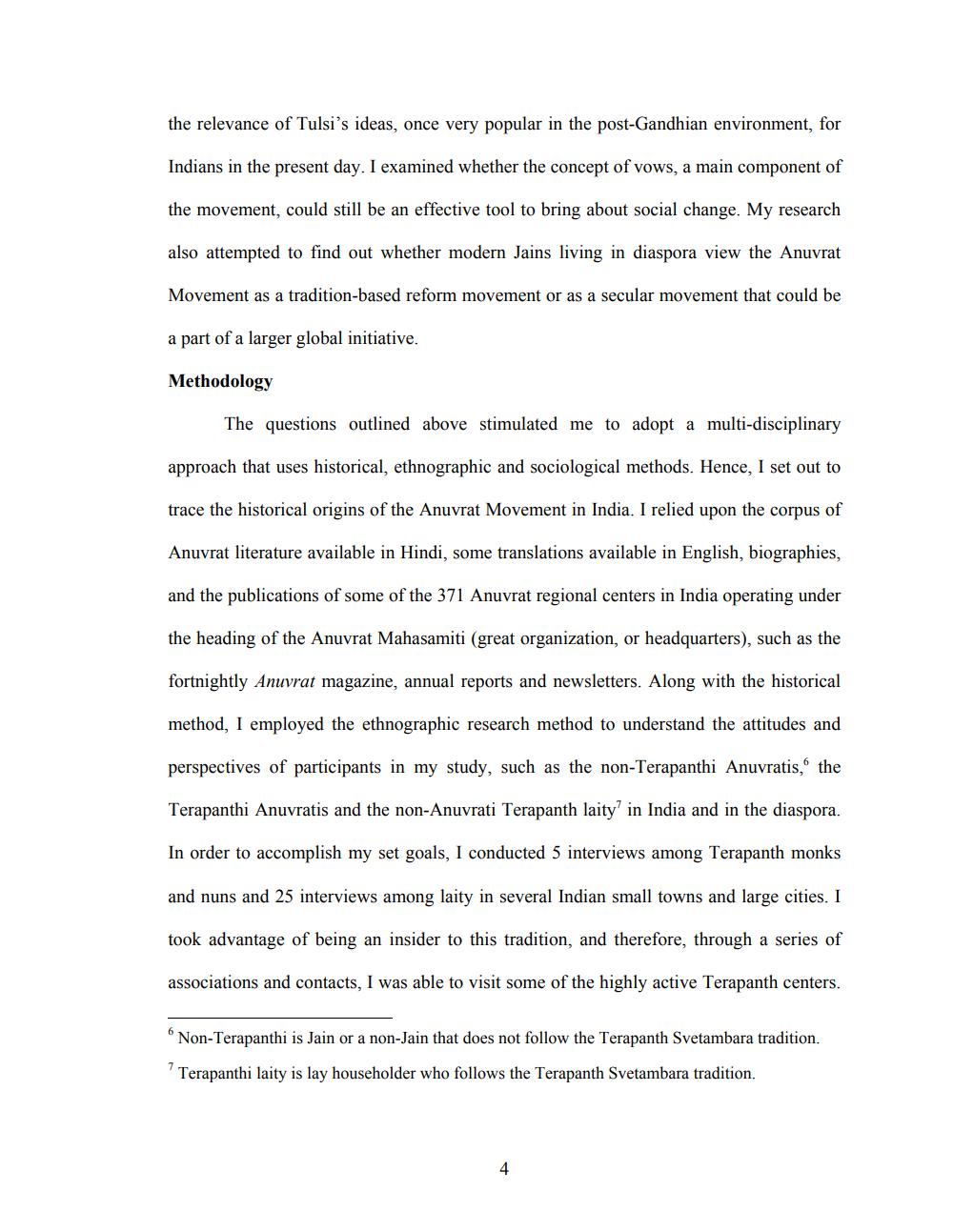________________
the relevance of Tulsi's ideas, once very popular in the post-Gandhian environment, for
Indians in the present day. I examined whether the concept of vows, a main component of
the movement, could still be an effective tool to bring about social change. My research
also attempted to find out whether modern Jains living in diaspora view the Anuvrat
Movement as a tradition-based reform movement or as a secular movement that could be
a part of a larger global initiative.
Methodology
The questions outlined above stimulated me to adopt a multi-disciplinary
approach that uses historical, ethnographic and sociological methods. Hence, I set out to
trace the historical origins of the Anuvrat Movement in India. I relied upon the corpus of
Anuvrat literature available in Hindi, some translations available in English, biographies,
and the publications of some of the 371 Anuvrat regional centers in India operating under
the heading of the Anuvrat Mahasamiti (great organization, or headquarters), such as the
fortnightly Anuvrat magazine, annual reports and newsletters. Along with the historical
method, I employed the ethnographic research method to understand the attitudes and
perspectives of participants in my study, such as the non-Terapanthi Anuvratis, the
Terapanthi Anuvratis and the non-Anuvrati Terapanth laity in India and in the diaspora.
In order to accomplish my set goals, I conducted 5 interviews among Terapanth monks
and nuns and 25 interviews among laity in several Indian small towns and large cities. I
took advantage of being an insider to this tradition, and therefore, through a series of
associations and contacts, I was able to visit some of the highly active Terapanth centers.
"Non-Terapanthi is Jain or a non-Jain that does not follow the Terapanth Svetambara tradition.
Terapanthi laity is lay householder who follows the Terapanth Svetambara tradition.




